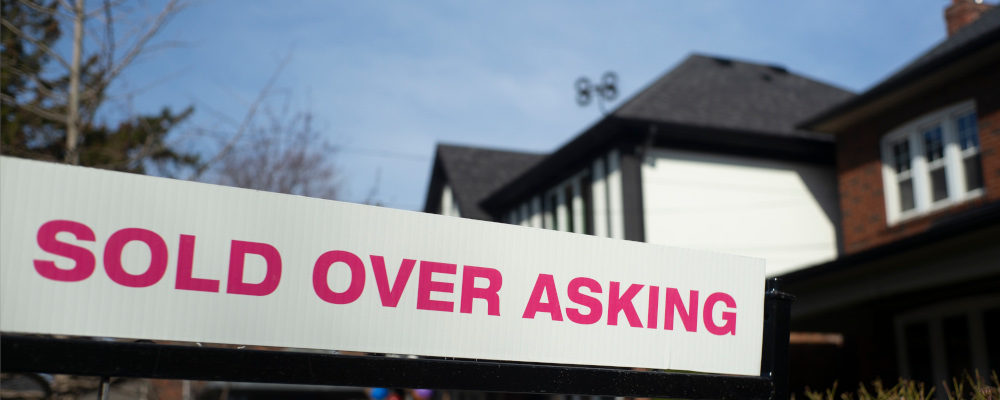House pricing in Canada is both the engine of our GDP and a ball and chain on our global competitiveness. As house prices increase it requires higher wages to pay ever-larger mortgages or rent. High wages make businesses more expensive to operate which ultimately flows through to the price of all the goods and services we enjoy. Every dollar we spend on rent is a dollar that doesn’t get spent on productive things—going to the movies, sporting events, concerts, or eating at restaurants.
There are many moving parts to the housing economy, and certainly there is no single lever any government can pull to fix the outrageous price of Canadian houses. But there is one that hasn’t been talked about much recently.
We can look south of the border for an interesting comparison.
The U.S. housing market shares a lot in common with Canada. The building codes are similar, we use the same materials, and build similar-sized houses. Zoning rules and suburban expansion have followed the same general trends. There are some foreign buyers in both countries, though the U.S. attracts more foreigners than Canada does. And yet curiously, the average price of a home in America is half the price of a Canadian home.1“As of February, the Canadian Real Estate Association reported that the average price of a Canadian home stood at 816,720 Canadian dollars, or $646,809 — over nine times the average household income. In contrast, the US has seen slightly lower price increases, with home prices rising 27% over the same period, Fortune previously reported. In America, the median home price last month stood at $375,000, an all-time high and a 15% rise from a year prior.” https://nypost.com/2022/04/25/the-average-canadian-home-price-is-now-double-that-of-us/
There are some construction cost differences, such as more undocumented laborers in the U.S. and slab-on-grade versus basement foundations. However, these costs alone cannot account for the $300,000 difference in the average house price.
One meaningful policy difference? Canada has the primary residence exemption, which allows anyone who has lived in their home for at least one year to capture the profit of selling the home entirely tax-free.2Income Tax Folio S1-F3-C2, Principal Residence https://www.canada.ca/en/revenue-agency/services/tax/technical-information/income-tax/income-tax-folios-index/series-1-individuals/folio-3-family-unit-issues/income-tax-folio-s1-f3-c2-principal-residence.html This is incredibly generous. Other tax-sheltered assets in Canada have stricter conditions. TFSA and RRSP programs have annual contribution caps; they don’t allow leveraged investing. This makes housing the most incentivized place to put our money.
This plays out on nearly every house sale in Canada. The seller of a house gets a windfall of tax-free profits and that money has an obvious place to go—into the next house. They can take that to the bank and leverage it up 5X, 10X, or even 20X again. With this extra-budgetary flexibility provided by the bank, they can buy their next house with less price sensitivity, so bidding $100,000 over asking might not put the loan at risk. And just like that house prices in the neighborhood jump 10 percent.
Further, the person who just sold for $100,000 over asking may have netted it tax free and could leverage up 20x into their next property. This tax-free money cascades and multiplies through the system. The proceeds from a house sale tend to stay in the housing market.
It’s worth calling out here that in many cities in Canada, someone who has lived in their house for 10-20 years could net more than $1M in tax-free profit.
The U.S. has a similar but slightly different policy. Firstly, Americans with a home mortgage get to write off their interest expense. This is a huge win for new homeowners who are paying a lot of interest in the first few years of paying the mortgage. This annual benefit puts money in people’s pockets at a time when they are likely to spend it back into the economy. Secondly, the capital gains exemption is capped at $250k, or $500k for a couple.3Topic No. 701 Sale of Your Home https://www.irs.gov/taxtopics/tc701 Thirdly, it requires living in the house for two years.
These slight differences between the Canadian and American policies have resulted in different buying behaviours.
The interest rate write-off encourages more frequent moving—and Americans do move about twice as many times in their lifetime than Canadians on average.4How Many Times Does The Average Person Move? https://fivethirtyeight.com/features/how-many-times-the-average-person-moves/
The American capital gains limits can take just enough capital out of the system that it reduces the house price growth relative to Canadian houses. Not a huge amount, but compounded over the last 50 years it has diverged our housing affordability. However, It is not the case that we should copy the American model. Housing is not particularly affordable there. It’s just a bit better than in Canada.
This suggests that government incentives intended to make it easier to buy a house have instead turned housing into an asset class that sucks up a significantly overweight amount of our money. That money inflates the prices.
Tax policy is not the be-all-end-all of housing policies that will fix Canada’s house prices. But, it is one of the few things that the federal government can directly influence.
Fundamentally, the government needs to re-align tax incentives such that investing in businesses, and R&D and making things is where we want to put our biggest allocations. Productive assets should make up more of what Canadians invest in. Overextending ourselves on a home purchase should feel like a mistake. When the most incentivized asset class is housing we shouldn’t be surprised to see prices continue to climb.
As much as housing is a supply and demand problem, prices are ultimately set by how much people are willing to spend. With a long history of price increases, insured loans with low rates and lots of leverage easily available, and tax-free gains when sold, the logical thing for many people is to spend as much as they can possibly squeeze out of the bank. This leads to pricing at the limit of what people can afford.
It would be remiss to ignore the other major contributors to house prices that affect both sides of the border. A bevy of municipal rules for zoning, building codes, permitting, road construction, setbacks, lot sizes, and density limits make it hard to build things. Every objection to a new tower or infill or rental units or not enough affordable housing eats away at anyone’s appetite to propose a new building. Construction has also been left behind in productivity improvements over the last 50 years. Houses are still often built on-site by hand with hammers and nails. Canada also faces a labour shortage in the trades and many construction workers are already booked into next year. There are a lot of headwinds.
However, any changes that work to bring down prices, would also be lowering the asset values of the existing homes. It will be a battle to go up against homeowners defending the value of their homes, and cities that protect high property values for their tax revenue.
Will we have the conviction to actually see through a decline in house prices over the coming decade? It remains to be seen, but if it happens Canadians may finally be unburdened by the high cost of housing, and the country will be one step closer to improving its global competitiveness.




